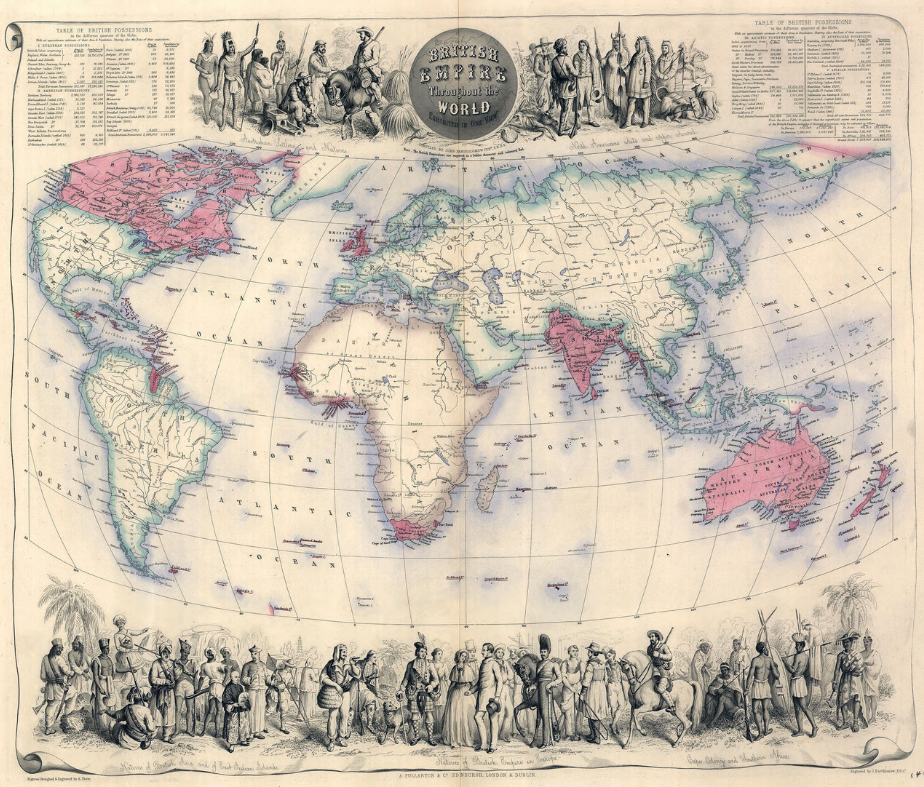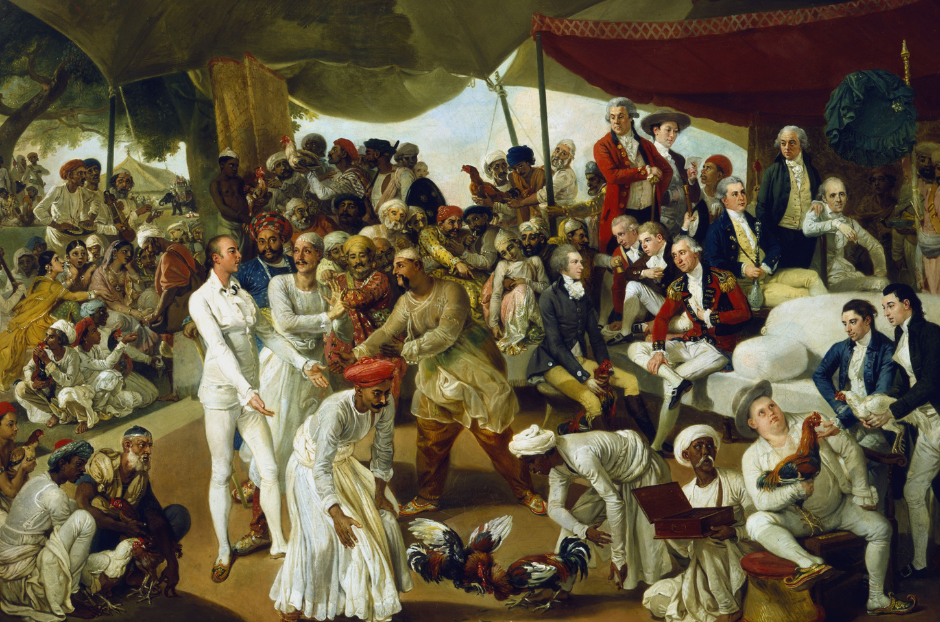Did you know that the British Empire was once the biggest, mightiest empire in the world? You might even say it was the greatest empire the world has ever seen. It was so huge that people said ‘the sun never sets on the British Empire,’ – a phrase attributed to a Scottish writer, John Wilson – meaning it was always daytime somewhere in the Empire.
Britain was the topmost global power for more than a century, but the start of the empire’s reach overseas began several centuries earlier.
Back in the 15th and 16th centuries, English and Scottish people began setting up colonies in far-off places like North America and the Caribbean before spreading south and east into Africa, and Asia. They did this mostly for trade and to make money.
Over the years the control of some countries within the Empire changed hands with their European neighbours including France and the Netherlands.

Britain’s Imperial Century
By the time Queen Victoria was on the throne, the Empire had grown incredibly large. The years 1815 to 1914 are referred to as Britain’s imperial century, and at this time the empire covered over 14 million square miles and included 450 million people – that’s more than a quarter of the world’s population at that time!
Queen Victoria, one of the longest reigning British monarchs, was 63 years on her throne. This is the reason why from 1837 to 1901, the period is known as the Victorian Era. During this time, Britain was the major global power, especially at sea. They even acted like the world’s police, keeping peace and controlling trade routes, sometimes called the Pax Britannica.
As well as having formal control over its own colonies, with a dominant position in world trade Britain could effectively control the economies of many other countries.
The empire was vital for trade and during the reign of Queen Victoria, at the height of the British Empire, British ports were full with ships arriving from far and wide carrying the goods that were processed and sold making Britain a wealthy nation.
The Great Exhibition of 1851, the very first ‘World’s Fair’, was a celebration of the diversity and richness of all the different cultures and resources from the Empire. But, like all great things, the Empire eventually began to decline in the early 20th century.

The Decline of the British Empire
The British Empire started to show it’s cracks and decline in the early part of the twentieth century. There are many reasons behind it, but one of the primary reasons was that Britain had lost their military supremacy. The world wars were incredibly costly for Britain, both in money and in the number of lives tragically lost or injured. After these wars, Britain was not as strong as it used to be.
After spending a lot of money and accumulating many debts from fighting in these World Wars, Britain was no longer in a financial position to spread her army and navy all over the globe.
Another reason for the decline, was the rise of nationalism in the countries that were part of the Empire. Over time, people in the colonies started to demand their freedom and wanted to govern themselves, rather than being ruled by Britain. Uprisings and revolts started to pop up in various parts of the empire, with some countries fighting to gain their independence. Transitions of power down the line were generally much more peaceful, but at the start of the decline, violence was usually path to independence.
Also, after World War II, there was a change in how people and countries around the world thought about empires and colonies. Many people started to believe that it wasn’t right for one country to control another. This change in thinking, along with the pressure from countries wanting independence, led Britain to gradually let go of most of its colonies.
Independence From The British Empire
By the middle of the 20th century, many countries had achieved independence from their once British Imperial rulers. This included large countries like India, which became independent in 1947. The process of these countries gaining independence marked the end of the British Empire as a major world power.
The decline of the empire wasn’t a quick process, but took place over many decades. Here is a table that shows the timeline of colonies gaining independence.
Countries in the British Empire
| Country | Pre-independence name | Year of independence or first stage |
|---|---|---|
|
|
Northern Persia | 1919 |
|
|
Antigua, Leeward Islands | 1981 |
|
|
1901 | |
|
|
1973 | |
|
|
1971 | |
|
|
1966 | |
|
|
British Honduras | 1981 |
|
|
Bechuanaland | 1966 |
|
|
1984 | |
|
|
took in Southern Cameroons | 1961 |
|
|
1867 | |
|
|
1960 | |
|
|
Dominica, Windward Islands | 1978 |
|
|
1922 | |
|
|
Swaziland | 1968 |
|
|
1970 | |
|
|
Gambia | 1965 |
|
|
Gold Coast, Togoland (Togoland got absorbed into the Gold Coast in 1957) | 1957 |
|
|
Grenada, Windward Islands | 1974 |
|
|
British Guiana | 1966 |
|
|
Hindustan,BharatVarsha | 1947 |
|
|
1932 | |
|
|
Mandatory Palestine | 1948 |
|
|
1962 | |
|
|
Transjordan | 1946 |
|
|
1963 | |
|
|
Gilbert and Ellice Islands | 1979 |
|
|
1961 | |
|
|
Basutoland | 1966 |
|
|
1951 | |
|
|
Nyasaland | 1964 |
|
|
Four parts: Malaya, North Borneo, Singapore and Sarawak | 1957 |
|
|
1965 | |
|
|
1964 | |
|
|
1968 | |
|
|
1948 | |
|
|
1968 | |
|
|
1931 | |
|
|
took in Northern Cameroons | 1960 |
|
|
Sultanate of Muscat and Oman | 1951 |
|
|
British India | 1947 |
|
|
British Qatari Protectorate | 1971 |
|
|
St Lucia, Windward Islands | 1979 |
|
|
St Kitts–Nevis and Anguilla, Leeward Islands | 1983 |
|
|
St Vincent, Windward Islands | 1979 |
|
|
1976 | |
|
|
1961 | |
|
|
1959 | |
|
|
British Solomon Islands | 1978 |
|
|
1934 | |
|
|
British Somaliland Protectorate | 1960 |
|
|
Ceylon | 1948 |
|
|
1956 | |
|
|
took in Tanganyika | 1961 |
|
|
1970 | |
|
|
1962 | |
|
|
Gilbert and Ellice Islands | 1978 |
|
|
1962 | |
|
|
Trucial States | 1971 |
|
|
Thirteen American Colonies | 1776 |
|
|
New Hebrides | 1980 |
|
|
Protectorate of South Arabia Federation of South Arabia |
1967 |
|
|
Northern Rhodesia | 1964 |
|
|
Southern Rhodesia | 1980 |